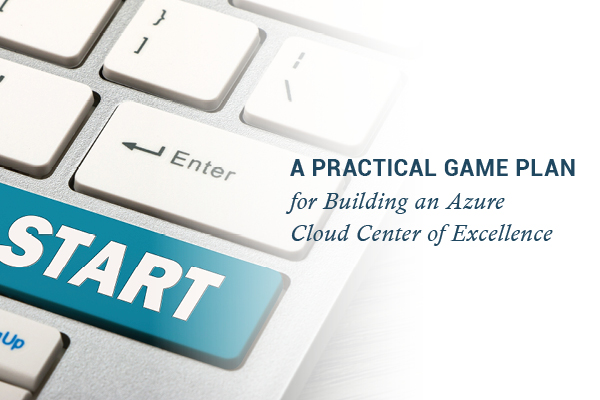One of our latest Azure cloud services webinars focuses on the Cloud Center of Excellence framework. In it, VIAcode CEO Victor Mushkatin explains exactly what a Cloud Center of Excellence (CCOE) is and how it helps organizations achieve their cloud objectives. By introducing a practical game plan for organizations unsure of how to adapt the framework to their unique needs, the webinar can be useful for every viewer. The Azure cloud services CCOE webinar concludes with examples drawn from VIAcode’s experience building effective cloud management and operations processes for Microsoft Azure.
If your company’s goals include optimizing your internal cloud experience, this is the place to start.
Understanding the Cloud Center of Excellence Framework
The Cloud Center of Excellence framework was developed to help enterprise organizations centralize and streamline cloud management, governance, and cost control.
The host of this webinar, A Practical Game Plan for Building an Azure Cloud Center of Excellence, describes CCOE as a cross-functional team focused on supporting and governing an organization’s cloud strategy.
The main pillars of the CCOE framework include:
- Cloud financial management: Maximizing an organization’s cloud ROI and ensuring that cloud spending is accountable
- Cloud operations: Maintaining the cloud environment’s availability and performance
- Cloud security: Crafting a cloud environment that prioritizes a defense-in-depth security posture and vulnerability elimination
All of this goes without saying that there are some challenges businesses face in implementing a CCOE. The framework was developed with large enterprise organizations in mind. Smaller companies see how successful Cloud Centers of Excellence are for larger organizations but doubt the relevance or practicality of creating their own.
However, at VIAcode, we believe the CCOE approach can work for businesses of all sizes. The framework simply has to be adapted to the unique circumstances of each. In the webinar, Victor explains his preferred approach: the CCOE Maturity Model, effectively helping small businesses transition to CCOE too.
The CCOE Maturity Model
The CCOE Maturity Model builds on the idea that each CCOE pillar can progress independently through three distinct implementation phases: visibility, automation, and alignment.
In the webinar, Victor explores what each phase means for the CCOE pillars we outlined above. For the purpose of understanding, let’s take a look at one example: security.
- The visibility phase uses Azure and third-party tooling to increase visibility into security issues and vulnerabilities
- During the automation phase, the focus shifts to enforcing security best practices to limit security drift
- Alignment focuses on compliance and leveraging monitoring and other tools to ensure that the organization complies with relevant standards
You’re probably thinking, “That sounds great, but how can I implement this framework for my business?”
- Where do I start?
- What tools should I use?
- How do I measure success?
This webinar covers all of these questions and more to get you and your business on your way to effective azure cloud management. At VIAcode, our Microsoft Azure experts work closely with all types of businesses to effectively measure Azure’s costs, operational effectiveness, and security performance. Then, we’re able to create an Azure cloud management strategy that makes sense for your specific needs and goals.
Watch this webinar or click the links below to learn more about the Cloud Center of Excellence framework from other exclusive, FREE VIAcode webinar events :
- A Holistic Approach to Operating Azure: People, Processes, and Tools
- The Well-Architected Azure Framework Series: Operational Excellence
To talk to an Azure DevOps expert about implementing a CCOE or VIAcode’s Azure Monitoring and Management service, contact us for a free initial consultation.







